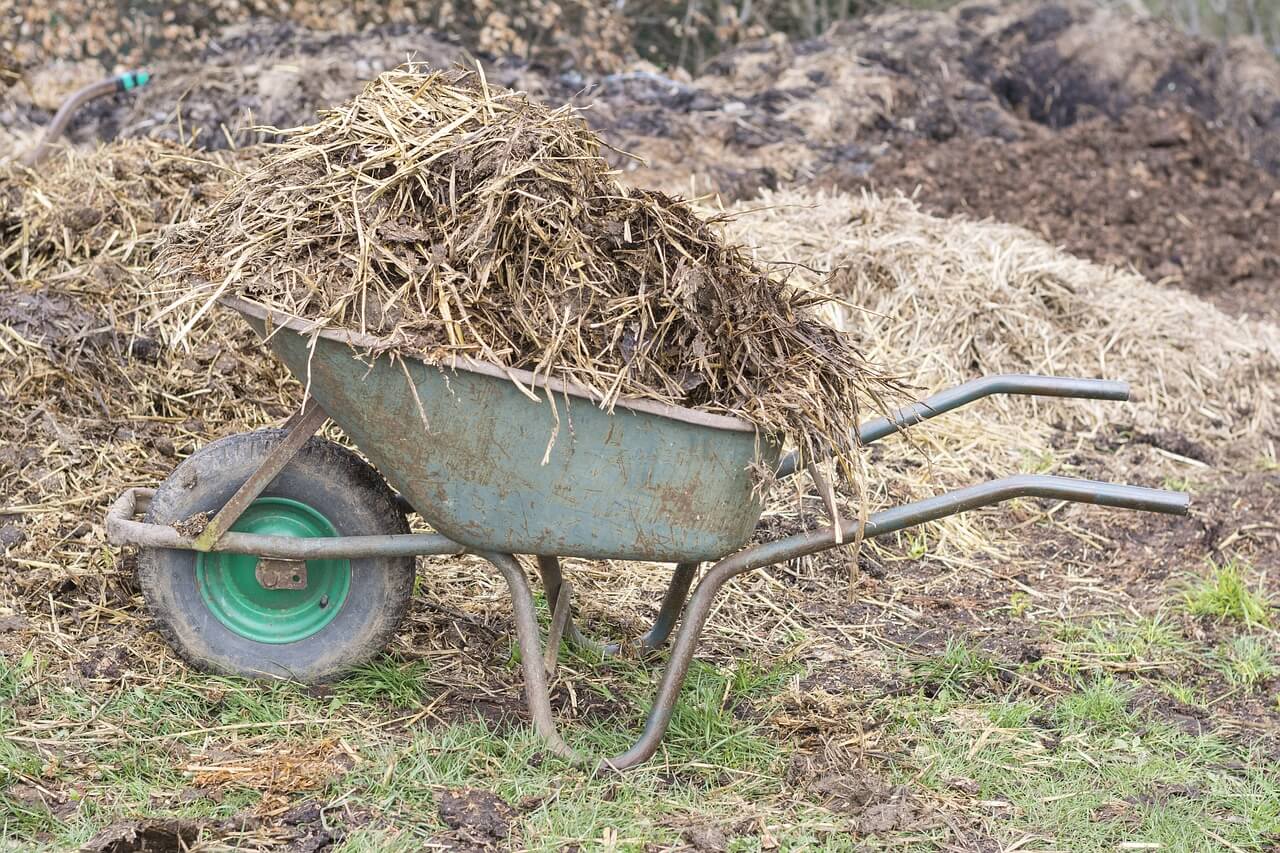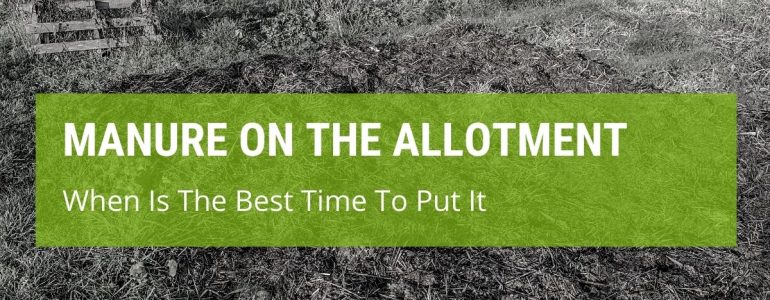There is no denying that putting manure on your allotment is a great thing; good for the soil and good for the following year’s veg. But when is the best time to put manure on the allotment? We are here to tell you when, and how to do this for best results.
How Often Should You Manure On Allotment?

You may breathe a sigh of relief when you hear that you don’t actually have to manure your allotment all that often!
It’s not like weeding, which needs to done very regularly to keep on top of invaders; manuring the allotment is an occasional job.
Some schools of thought suggest that once every thee years is enough for the plants to get extra nutrients.
However, if your soil is particularly poor, or you are planting especially greedy plants, you may wish to manure more often.
Whatever your circumstances, you shouldn’t manure your allotment more than once a year.
Over manuring can lead to problems with your plants; too much nitrogen may be released into the soil, and this can affect growth.
When Should Manure Be Applied?
Depending on the type of soil you have, you should consider manuring your allotment at different times of the year:
For most soils, applying manure in Spring (March to April) is the ideal time. This will be just before the growth of new plants begins, so they should get all the nutrients.
If you have sandy soil, you should manure from late Winter. This means that the nutrients will be able to get into the soil, even though it is less good at absorbing.
You can, of course, manure in Autumn, as long as you don’t have sandy soil – this is a good solution, as the cold weather will allow the nutrients to be absorbed slowly.
It is not recommended to manure in late summer, as the breakdown of the manure will release soluble nutrients which will then be easily washed away by winter rains.
Do not put any manure where you have seedlings, as it can burn the delicate young plants.
How Do You Spread Manure On An Allotment?
Spreading manure on an allotment can be as easy as simply spreading it over the surface, and leaving it to work its way in.
Or, you can spend hours digging it in and spreading it through the soil – this method takes more effort, but it can be very effective, especially for heavy soils.
You should try to make sure that you spread the manure around easily – it’s no good having a big clump in one area, and none in another!
You can use a rake or a fork to spread out the manure well enough so that the whole plot is covered.
Tipping out a bit here and there from a wheelbarrow is also a good option; just make sure you don’t slip and dump the whole lot in one place!
Should I Dig Manure In Or Leave On Top?
There are two schools of thought when it comes to manure on your allotment – you can either dig it in, or leave it on the surface.
- If you leave it on the surface, this is undoubtedly easier and takes less effort than digging it in.
- Digging in the manure can help it to break down more quickly, and allow the nutrients to spread through the soil.
- Leaving manure on the surface will still give the soil the same benefits, but it may take a little longer.
- If you dig in your manure, it has the added bonus of breaking up the soil – this is great if you have particularly heavy soil.
- Any manure you add to your allotment should be well rotted, particularly if you have young plants, as un-rotted manure can burn plants.
This video, although it is a little amateur, shows you a version of applying manure and leaving it to lie on the surface:
What Is The Best Manure For A Vegetable Garden?
There are as many different types of manure as there are creatures who leave manure!
Not all manure is created equal, and there is some that is good for the soil, and some that should never be applied to the ground.
As a general rule, plant eaters’ manure is the best for applying to the soil. This can be from horses, sheep, goats – as long as it is a vegetarian, you can use its droppings!
Omnivores manure, such as that from chickens or pigs, should be applied with great care – there may be things inside the manure that is not the best thing for the garden.
(However, here is an article from the RHS, explaining the best way to use chicken manure on your garden).
And you should NEVER apply carnivore manure onto your garden – dogs, cats, people – none of these types of manure is suitable for placing in your veggie patch.
The most important thing about any manure that you use in your garden is that it should be well rotted.
If the manure has not been left to break down and rot, it can “burn” plants and adversely affect the soil, no matter how much we think we are helping.
If you can’t find a good source of manure, you can ask local farmers who will be happy to give you a bag or two of their livestocks’ leavings!
Most farmers and horse stables will be very happy to let you have manure for free – just ensure that you leave it to rot well before you apply it.
Final Words
Manure is one of the best fertilisers you can get for your garden – it is all natural, packed with nutrients, and, provided it is well rotted, it doesn’t smell bad.
So what are you waiting for? Now that you know when is the best time to put manure on the garden, grab your wheelbarrow and get spreading! And if you need more information about allotment gardening, here is our guide on how start one from scratch.








Before using manure, it’s a good idea to check the grazing source for the animals that produced the manure due to the risk of herbicide contamination – various articles online – eg from the RHS – https://www.rhs.org.uk/soil-composts-mulches/weedkiller-in-manure.